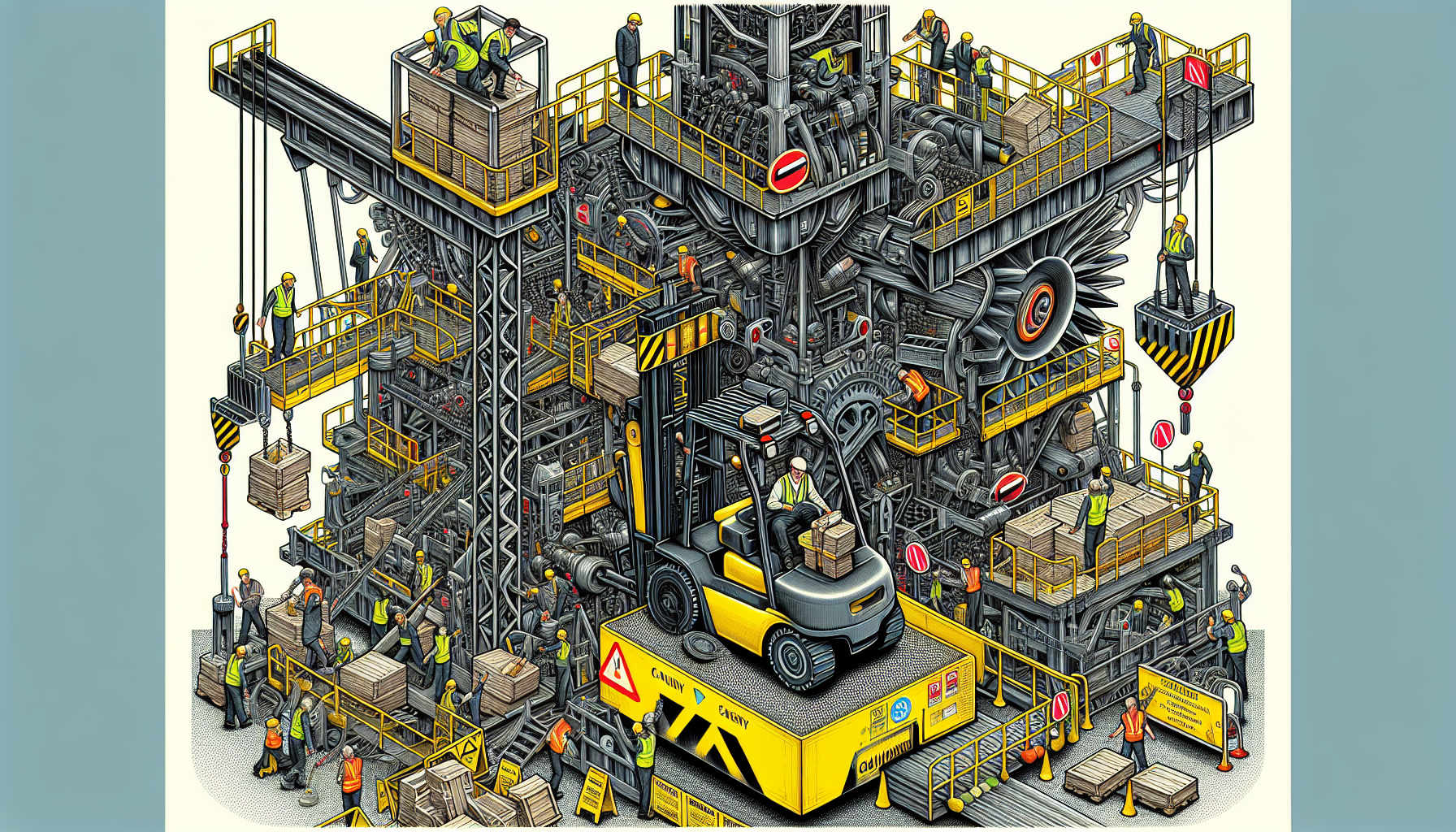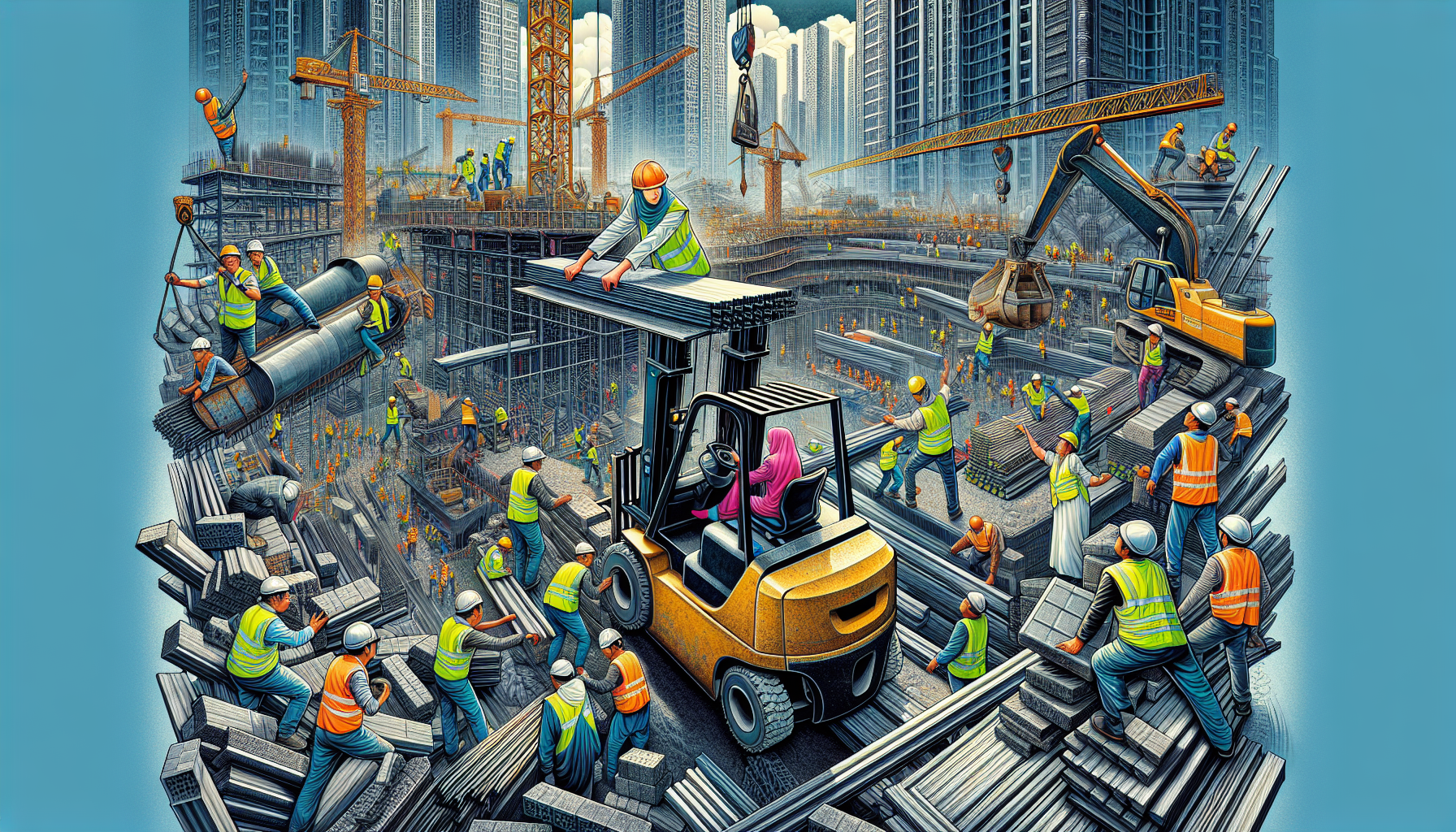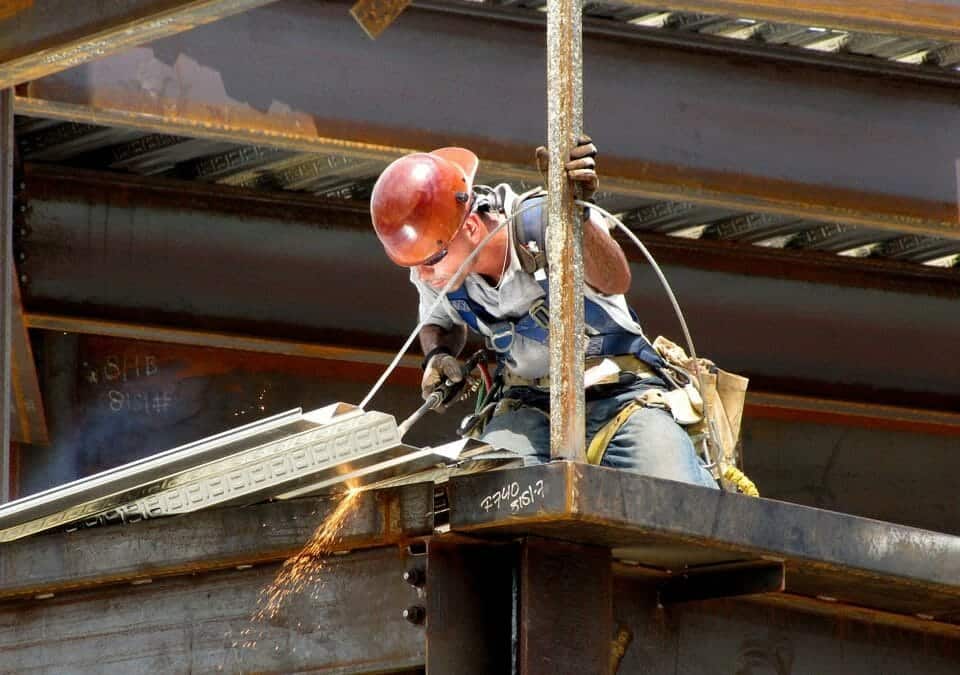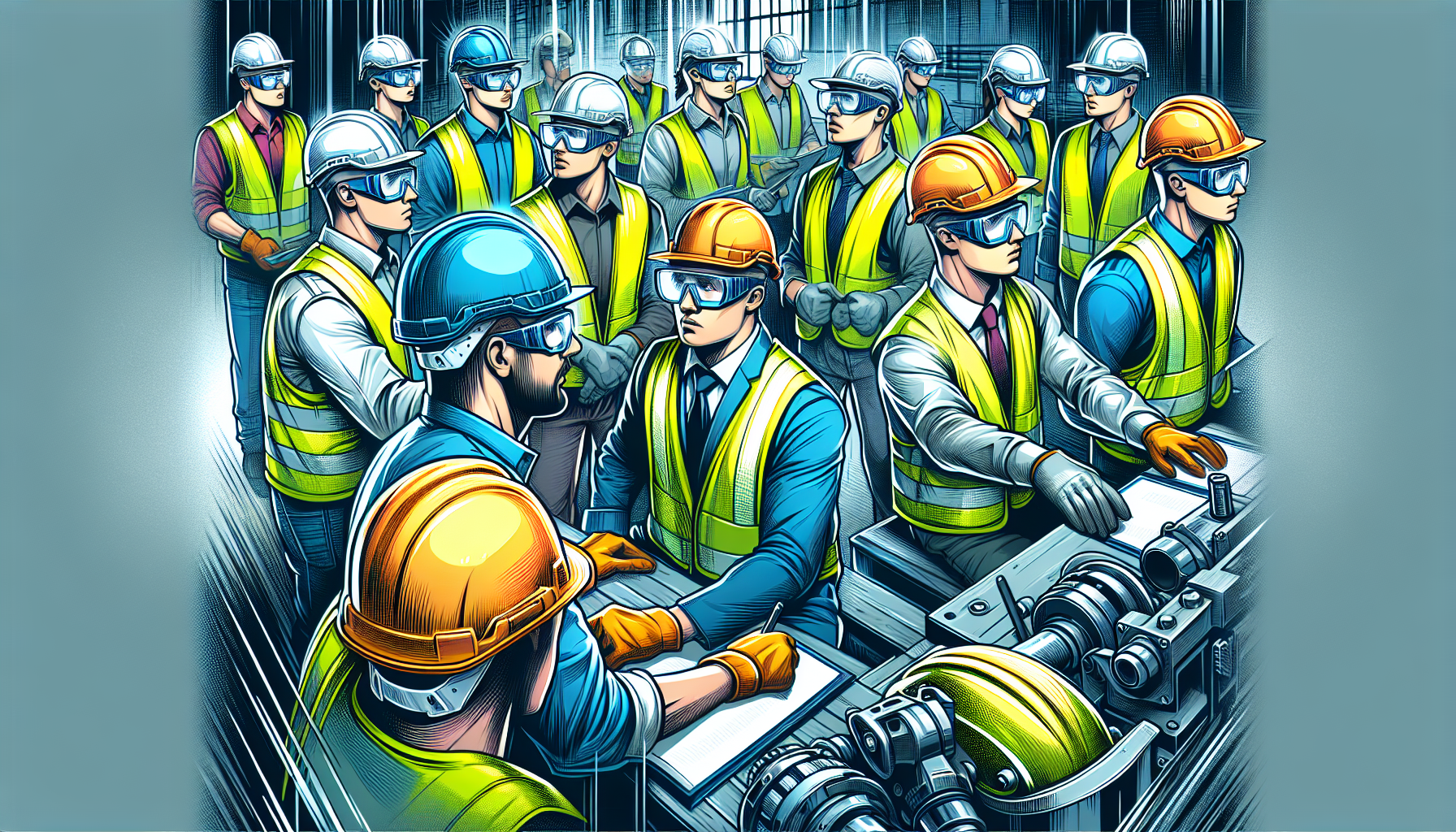Guide to Injuries From Heavy Industry Work Accidents
Heavy industry work accidents can be life-altering. These accidents can happen even when safety protocols are strictly enforced. This guide dives into recognized hazards, prevention strategies, and the personal toll of these accidents and resulting Virginia workers’ compensation claims.
Key Takeaways
-
Heavy industry workers are exposed to various risks such as machinery mishaps, transportation accidents, and exposure to harmful substances, all of which require strict safety measures to prevent accidents.
-
Preventative measures including safety training, personal protective equipment (PPE), and rigorous safety protocols are crucial in minimizing heavy industry accidents and ensuring worker safety.
-
Heavy industry work accidents can cause devastating injuries and consequences for the workers’ compensation injury victim.
Analyzing the Hazards: Common Accidents in Heavy Industry

In the world of heavy industry, workers face the risk of becoming a statistic of industrial accidents, falling victim to machinery mishaps, transportation troubles, and exposure to harmful substances every day. It’s a reality that underscores the importance of safety procedures in preventing heavy industry work injuries.
Machinery mishaps, in particular, are frequent causes of Virginia workers’ compensation accidents. Workers can find themselves pinned, crushed, or struck by heavy machinery, often leading to serious injuries or even fatalities. Beyond the immediate physical trauma, these accidents can cause emotional distress and financial hardships for the victims and their families. From falls from equipment platforms to electrocution due to contact with power lines, the variety of machinery-related accidents is as vast as it is troubling.
However, machinery accidents are not the only danger lurking in heavy industry sites, such as the manufacturing industry. Transportation troubles at job sites and exposure to harmful substances also cause substantial injuries.
Machinery Accidents
The large yearly numbers of machinery accidents in heavy industry reveals sobering statistics. The potential for severe injuries is astoundingly high, with accidents often leading to:
-
limb loss
-
crushing injuries
-
broken bones
-
nerve damage
-
vision loss
-
burns
-
spinal injuries
At the heart of these accidents often lies a combination of inadequate machine maintenance and the use of equipment with defective parts. Poor maintenance and mechanical failures can transform machines into ticking time bombs that inflict serious injuries upon unsuspecting workers.
Transportation Troubles at the Job Site

Transportation incidents on job sites serve as reminders of the risks associated with moving large volumes of materials using heavy equipment. The injuries we see most as a result of such incidents include:
-
significant neck and back trauma
-
broken bones
-
head injuries
-
internal injuries
Transportation accidents often stem from improper loading and unloading procedures and poor communication between equipment operators and site workers.
Exposure to Harmful Substances
In the United States, more than 13 million workers in various industries risk exposure to chemicals that can be absorbed into the body. This exposure doesn’t just pose immediate health risks—it can also lead to long-term health issues.
In heavy industry, a worker’s exposure to harmful substances can lead to:
-
long-term health issues
-
respiratory problems
-
skin irritations
-
organ damage
-
cancer
This exposure can dramatically alter the course of their lives. Occupational skin diseases, such as contact dermatitis, account for a significant portion of occupational disorders, with symptoms ranging from itching and redness to chronic skin changes.
Preventative Measures: Ensuring Worker Safety
The Role of Safety Training
Safety training serves as the foundation of accident prevention. It ensures that all workers and managers comprehend workplace hazards and actively engage in the design and enforcement of safety programs. By understanding regulations like the Occupational Safety and Health Act, employers, managers, and supervisors can:
-
Bolster workplace safety
-
Reduce the risk of accidents and injuries
-
Create a culture of safety awareness
-
Improve employee morale and productivity
This training enables workers to recognize potential risks and adopt measures to decrease the likelihood of injuries and industrial accidents.
Equipping Workers with Personal Protective Equipment
Personal protective equipment (PPE) is the unsung hero in the battle against workplace accidents. Providing workers with the correct PPE is crucial for their protection against job-related hazards. Some examples of PPE include:
-
Hard hats
-
Safety glasses
-
High-visibility vests
-
Sturdy footwear
Depending on the specific hazards of their jobs, workers may also require additional PPE like:
-
gloves
-
hearing protection
-
face shields
-
respiratory protection
-
fall protection gear
These protective measures can significantly reduce the risk of serious injuries and fatalities.
Implementing Rigorous Safety Protocols
The backbone of accident prevention in heavy industry is the implementation of rigorous safety protocols. These protocols help to ensure that safety training and personal protective equipment are used effectively, reducing the risks posed by machinery mishaps, transportation troubles, and exposure to harmful substances.
Lack of proper training, insufficient protective equipment, and failure to adhere to safety protocols, such as lockout/tagout procedures, are common causes of machinery accidents. Employers have a legal obligation to act upon reported unsafe conditions, reinforcing the need for compliance with safety standards. Regular safety checks and maintaining a well-organized work environment are essential practices for preventing accidents and ensuring quick evacuations.
Case Studies: Heavy Industry Accidents
As we delve deeper into the realm of heavy industry safety, it’s instructive to look back at the past. Case studies of previous incidents provide valuable insights into the nature of accidents and the measures that can prevent them. From mining disasters to construction catastrophes and industrial explosions, these incidents offer lessons that can improve safety measures and prevent future accidents.
In 2003, severe explosions, including a boiler explosion, a dust explosion, and a gas explosion, involving combustible powders occurred in North Carolina, Kentucky, and Indiana, causing 14 fatalities and numerous injuries. These incidents sparked a nationwide study to assess the extent of such risks and resulted in new safety recommendations for facilities that manage combustible powders.
However, to fully appreciate the lessons these case studies offer, we need to delve deeper into specific incidents in the mining industry, construction sites, and scenarios involving combustible materials.
Disasters in the Mining Industry
The history of the mining industry is punctuated with numerous disasters, each leaving a trail of lessons for future safety measures. The Monongah coal mine disaster in 1907, for instance, is considered the worst in US history, claiming 362 lives and leading to the foundation of the Bureau of Mines.
However, the risks persist. More recent mine disasters, such as the Upper Big Branch Mine-South explosion in 2010 with 29 deaths, and the Sago Mine explosion in 2006 with 12 deaths, underscore the ongoing dangers in the mining industry.
Catastrophes on Construction Sites
Construction sites, with their buzzing activity and constant movement of heavy machinery, are also hotbeds of accidents. These accidents often involve a significant human factor, with construction workers frequently experiencing incidents resulting from errors such as improper procedures or lack of safety measures.
One such incident involved an 18-year-old worker who became entangled in a portable mortar mixer due to the failure to properly lock out and disconnect the machinery from its energy source. The incident underscores the importance of rigorous safety protocols and the devastating consequences of overlooking them.
Industrial Explosions: A Study of Combustible Materials
Industrial explosions involving combustible materials, such as methane explosion, are some of the most devastating accidents, with far-reaching impacts. Improper chemical mixing, such as what caused the explosion at a pesticide plant in India, can also have fatal consequences. These incidents underscore the need for proper training on the handling and storage of chemicals and the importance of implementing strict safety regulations.
Legal Framework: Understanding Workers’ Rights and Compensation
In the wake of a workplace accident, understanding workers’ rights and navigating the legal framework can be daunting. However, these rights and the compensation systems are crucial to ensuring that injured workers get the support they need.
Navigating Workers’ Compensation Claims
Workers’ compensation claims serve as a lifeline for workers injured on the job. Injured workers must report their injury to their employer promptly and are usually required to file a claim within two years after the accident. Employers also have a time frame, typically 30 days, to report the accident to the Virginia Workers’ Compensation Commission.
Claims can be filed by the injured workers in the following ways:
-
In person
-
By mail
-
By fax
-
Online, using the claim number and PIN provided after reporting the accident
The prescribed time limit for filing the claim with the workers’ compensation commission is generally no later than two years following the accident.
Regulations Protecting Workers
Employers bear a significant responsibility in ensuring worker safety. They are required to adhere to OSHA standards, which include obligations to maintain a workplace free from recognized hazards that are likely to cause death or serious physical harm. Investigating mining industry accidents typically involves a detailed analysis of evidence such as photographs, testimonies, and construction documents to ensure compliance with safety standards.
Injured workers are advised to immediately report any injuries to their employer and initiate a workers’ compensation claim with their state’s authority. By doing so, they not only protect their rights but also ensure that employers are held accountable for maintaining safe work environments.
Worker Experiences with Heavy Industry Accidents
Workers who experienced accidents reported both immediate and lasting physical impacts, including chronic pain and reduced mobility. Beyond the physical trauma, these accidents also leave psychological scars, with workers grappling with trauma, anxiety, and depression, hindering their return to work.
Following an accident, workers often face financial instability due to medical bills and loss of income during recovery. The strain of work-related injuries extends to family members, who must often take on care giving roles or extra work.
The importance of preventative measures in ensuring worker safety and preventing accidents can’t be understated. Alert workers can play a crucial role in identifying potential hazards and maintaining a safe work environment.
Talk To a Virginia Workers’ Compensation Lawyer
If you’ve been injured on the job and are struggling to deal with your case manager, it is wise to talk to a lawyer who is experienced in workers’ compensation claims. At the Ritchie Law Firm, you can talk to us for FREE . . . NO STRINGS ATTACHED! We can give you advice on your claim before the nurse case manager takes an action that could damage your case. Check out our article on “How Much Does a Workers’ Comp Lawyer Cost” here.
For more than 50 years, the Ritchie Law Firm has successfully helped thousands of injured workers navigate the complex Virginia workers compensation claim process and deal with their nurse case manager. The Ritchie Law Firm specializes in serving injury victims. We never represent insurance companies or corporations. If your workers’ compensation case is going to hearing or if you are having difficulty with your case manager, you will want a trial expert on your side. We are board certified trial specialists through the National Board of Trial Advocacy. The attorney you choose for your workers’ compensation case can make all the difference.
Virginia Workers’ compensation is a complex system that can be very difficult to navigate, especially when you’ve been assigned a nurse case manager. Be very careful to make certain that your rights are protected before you sign anything. There is no cost to talk to our workers’ comp lawyers. If we take your case, we don’t get a fee unless we win your case. There is no risk to you to get some information about your case before you make any decision that might negatively affect its outcome.
Choose your lawyer with care. . . you can talk to us for FREE.
Call today 800-277-6124, fill out the form below or
download our free ebook in the side panel.
Ritchie Law Firm serves injured workers in all of Virginia while helping clients in cities and surrounding areas of Harrisonburg, Charlottesville, Staunton, and Winchester. Check out case studies from some of the cases we’ve handled by clicking here.




